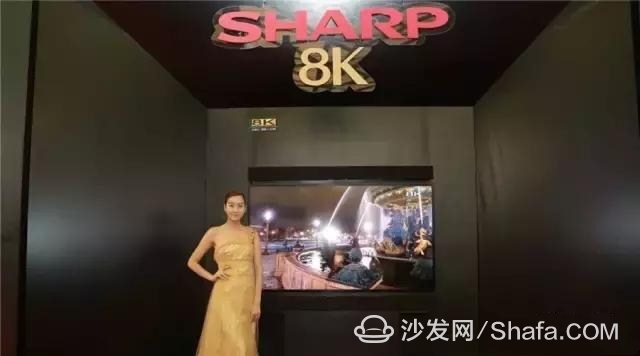
8K technology currently holds limited commercial value for both the general consumer and the color TV industry. However, major LCD TV manufacturers like Sharp are pushing 8K aggressively, driven by a kind of "gambler’s mentality." Their main goal is to prolong the life cycle of LCD technology in the market. Despite this, new technologies such as OLEDs, laser displays, and quantum dot TVs are emerging, which may eventually make liquid crystal displays obsolete.
Several companies have already introduced 8K products, including Sharp's AQUOS 8K TV, the earlier LV-85001 model launched in Japan, Philips' 31.5-inch 8K display, and Dell's UltraSharp UP3218K. It's clear that 8K is on its way to the display and TV industry. But for it to gain real popularity, it will likely take at least a decade of development and accumulation. For now, 8K remains more of a strategic move by a few TV manufacturers to extend the lifespan of LCD technology rather than a mainstream trend.
As living standards continue to rise, consumers are demanding larger screens with better picture quality. This has led many TV brands to focus on improving panel technology while also expanding screen sizes. 8K offers a resolution of 7680 x 4320—16 times higher than the common 1080P standard. This level of detail not only enhances image clarity but also improves the viewing angle, offering a more immersive experience for users.
Despite its impressive visuals, 8K TVs come with a hefty price tag. For example, Sharp's 70-inch AQUOS 8K TV in China costs around ¥68,888, while its 85-inch LV-85001 model was priced at about ¥840,000 when launched in Japan two years ago. Even smaller models, like Philips’ 31.5-inch 8K display, cost around $3,899 (approximately ¥26,000). These high prices make 8K TVs inaccessible to the average consumer at this stage.
Comparing the path of 4K adoption, it's clear that 8K's journey to mass market acceptance will be much longer. Since 4K first appeared in 2011, it hasn’t truly taken off in most regions even after seven years. In China, most TV signals are still at 2K resolution. In the U.S., it wasn't until 2015 that over 50% of consumers became aware of 4K, and only one-third expressed interest in buying a 4K TV. Today, 4K TV adoption in China is just beginning, and there's still a long way to go.
Moreover, the success of 4K TVs relied heavily on content availability. Streaming platforms began upgrading their services to support 4K, producing high-quality video content, and integrating it into smart TVs. Only then did 4K start gaining traction. Currently, only 16% of U.S. households own a 4K TV, but by 2020, it's expected to account for 60% of global TV shipments. That means it took nearly a decade for 4K to reach that level of adoption.
Based on this timeline, 8K's path to mainstream acceptance could take 10 years or even longer. Another challenge is the potential rise of OLED and laser TVs, which could make 8K LCD TVs obsolete. However, companies like Sharp are pushing 8K early due to fierce competition. With other manufacturers investing heavily in quantum dots, OLEDs, and ULEDs, the race for market dominance requires bold moves. 8K seems to be a strategic play to capture attention and maintain relevance.
In terms of pricing, content, and user demand, 8K TVs don’t seem ready for rapid market expansion. Plus, the future of the TV market is still uncertain. As technology continues to evolve, it's unclear whether 8K will ultimately shape the future of television.
For more information on Smart TVs and streaming boxes, visit Smart TV/box information network sofa butler (http://), China's leading platform for smart TV and TV box news, reviews, software, and user support.
AC/DC Power Adapter
ac dc adapter,dc adapter,ac adapter 12v,dc power adapter,ac dc adapter 24v
FOSHAN SHUNDE KELICHENG POWER SUPPLY TECHNOLGY. CO,LTD , https://www.kelicpower.com

